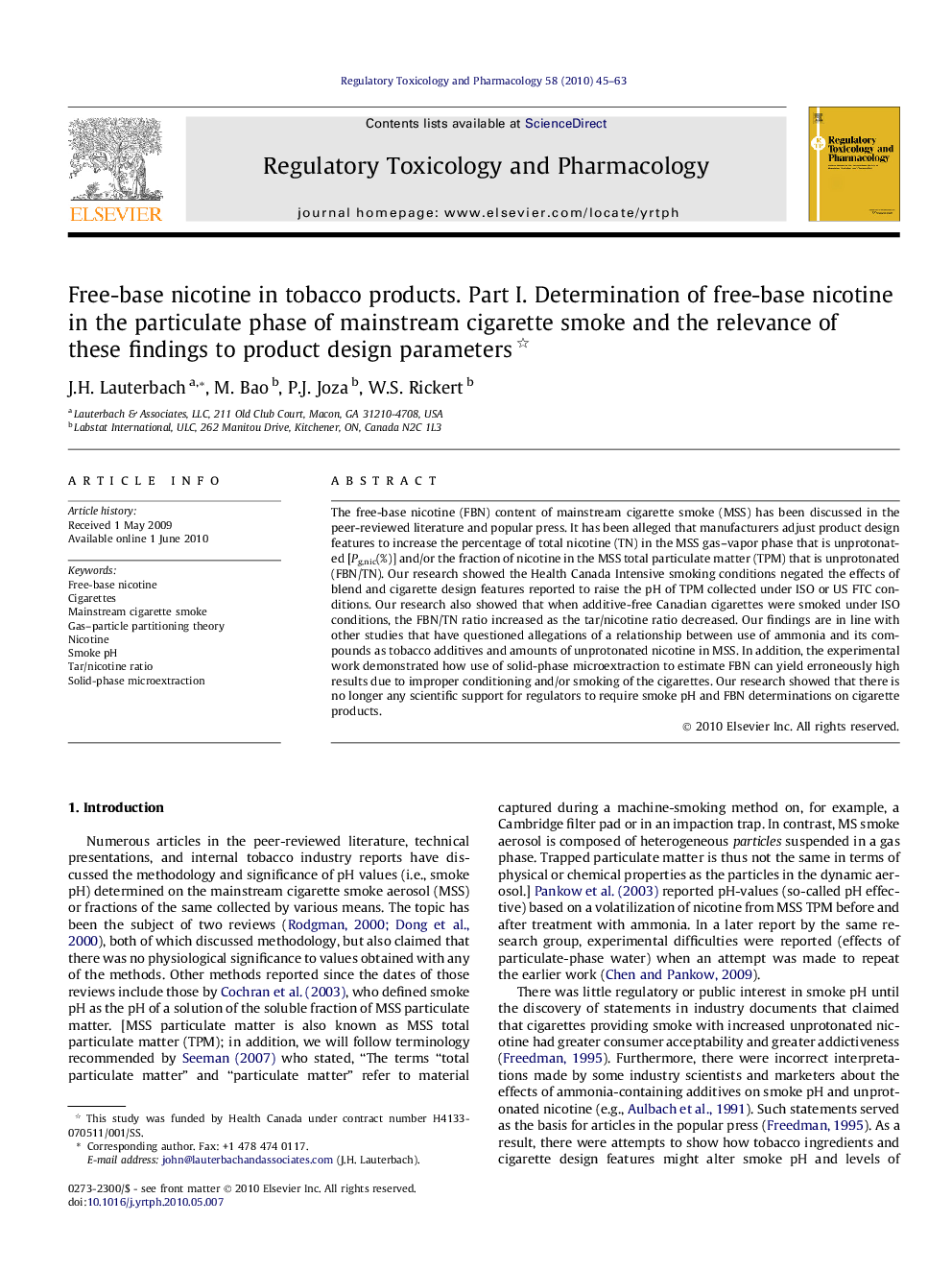| Article ID | Journal | Published Year | Pages | File Type |
|---|---|---|---|---|
| 2592499 | Regulatory Toxicology and Pharmacology | 2010 | 19 Pages |
The free-base nicotine (FBN) content of mainstream cigarette smoke (MSS) has been discussed in the peer-reviewed literature and popular press. It has been alleged that manufacturers adjust product design features to increase the percentage of total nicotine (TN) in the MSS gas–vapor phase that is unprotonated [Pg,nic(%)] and/or the fraction of nicotine in the MSS total particulate matter (TPM) that is unprotonated (FBN/TN). Our research showed the Health Canada Intensive smoking conditions negated the effects of blend and cigarette design features reported to raise the pH of TPM collected under ISO or US FTC conditions. Our research also showed that when additive-free Canadian cigarettes were smoked under ISO conditions, the FBN/TN ratio increased as the tar/nicotine ratio decreased. Our findings are in line with other studies that have questioned allegations of a relationship between use of ammonia and its compounds as tobacco additives and amounts of unprotonated nicotine in MSS. In addition, the experimental work demonstrated how use of solid-phase microextraction to estimate FBN can yield erroneously high results due to improper conditioning and/or smoking of the cigarettes. Our research showed that there is no longer any scientific support for regulators to require smoke pH and FBN determinations on cigarette products.
